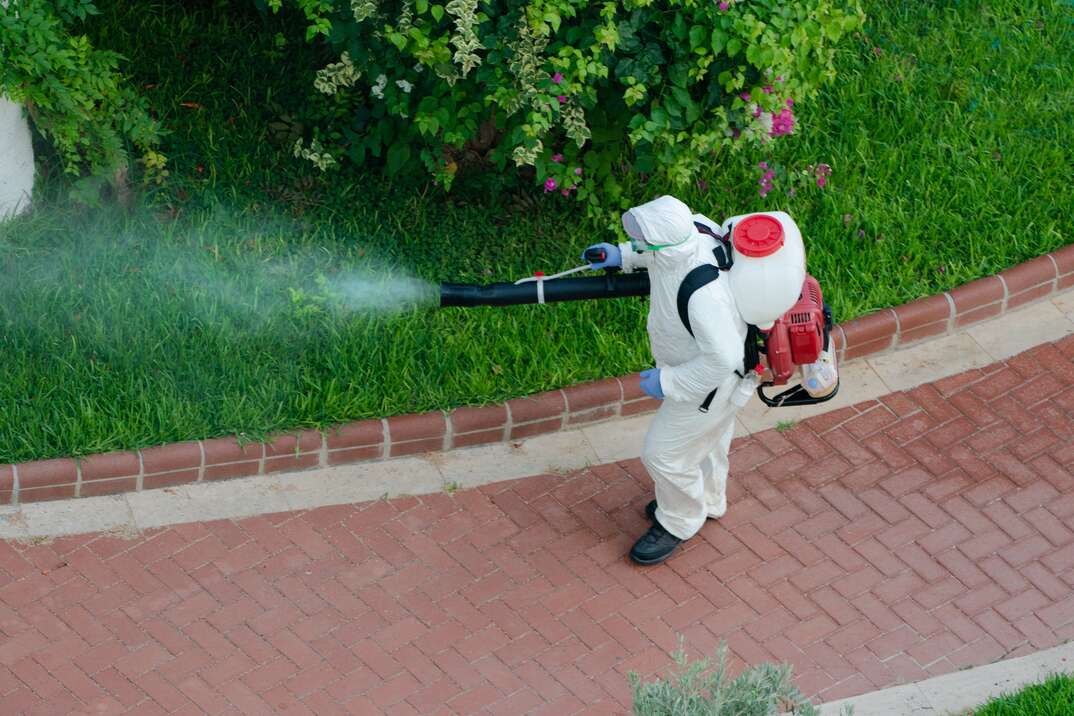Are Pest Control Products Dangerous For Kids and Pets?

If you’ve ever found ants in your sugar bowl, you understand the importance of pest control. However, families with children and pets may worry about the safety of modern pesticides.
To keep your house both bug-free and safe for your two- and four-legged loved ones, here's what you should know about home pest control solutions.
What Is a Pesticide?
The Environmental Protection Agency defines a pesticide as any substance intended to prevent, repel, destroy or mitigate pests, including nuisance plants. To be legally distributed or sold in the United States, pesticides must be registered with the EPA.
Whether you hire a pest exterminator or opt for a DIY approach, modern pest control products may include the following core ingredients:
CCA
Chromated copper arsenate is used to protect wood from fungi, termites and other pests. CCA is often found in commercial wood products such as shingles, posts and beams.
DEET
DEET is used in repellent products, particularly in lotions and sprays that protect against biting insects.
Glyphosate
This herbicide targets weeds and nuisance grasses. It's found in products such as Roundup and may be used in agricultural, commercial and residential applications.
TCVP
Tetrachlorvinphos, or TCVP, is used to control fleas, ticks, lice and other pet and livestock pests. It’s found in pet collars or in sprays or powders used on animals.
Diatomaceous Earth
Products containing diatomaceous earth may help control pests such as bedbugs, roaches and beetles.
Fipronil
Often used to eradicate ants, beetles, weevils and roaches, fipronil can be found in many commercial pesticide products, including gel baits. Because it can kill fleas and ticks, it's also used in spot-on pet products.
Pyrethrins and Pyrethroids
Derived from chrysanthemums, pyrethrins work on many pests, including wasps. Pyrethroids are their synthetic counterparts. Common examples of pyrethrins and pyrethroids include bifenthrin, permethrin, cyfluthrin, cypermethrin, deltamethrin and lambda-cyhalothrin.
Are Those Ingredients Toxic to Humans?
Pesticide ingredients have varying levels of toxicity and can pose health risks to humans. Chronic exposure can result in hormonal imbalances, damage to the endocrine and nervous systems and an increased risk of cancer. However, the amount of exposure an average person receives is too low to pose a real risk. Some people may experience headaches or skin and eye irritation caused by direct exposure.
What About Small Children and Pets?
Small children and pets may be more vulnerable to pest control chemicals because they often play in areas where these products are applied and may put contaminated objects in their mouths. Young children may be particularly susceptible to pesticide-related issues because their organs haven’t yet matured, and exposure has been linked to learning problems and certain types of cancer. If you have small children or pets, it’s crucial to store pesticides safely out of reach.
What Types of Pest Control Products Are Safer for Indoor Use?
Chemical pest control products should only be used indoors if other mitigation methods haven’t worked. When using pesticides inside a home, it’s safest to stick with ready-to-use baits, dusts or sprays that are specifically designed for indoor use and don’t require additional modification such as mixing or diluting. Products intended for the lawn and garden should never be used indoors. In fact, it’s best to leave the use of concentrated pesticides to pest control professionals, regardless of where they’re used.
If you must use pesticides indoors, always read the label and follow the instructions. You should only use baits or dusts in areas that children and pets can’t access, and if you’re spraying, keep kids and pets away until the product is dry and the room has aired out. Never use pesticides on toys, bedding, pet dishes or surfaces intended for food.
What Are Some Natural Forms of Pest Control?
If you’re concerned about side effects from home pest control chemicals, natural alternatives may be worth considering. These common household products may help you deal with unwanted pests:
- Coffee grounds: Sprinkle leftover coffee grounds in your garden or around the exterior of your home to keep pests away.
- Cornmeal: Place cornmeal in areas frequented by ants. They’ll carry it back to their nest, where it’s fatal to the colony.
- Fresh herbs: If you like spending time outside, toss rosemary or sage onto your fire pit to keep away mosquitoes.
- Essential oils: To repel dust mites, combine lavender, eucalyptus or peppermint oil with water. Using a spray bottle, mist furniture and bedding, and let it air dry.
- Basil: Plant basil near your patio or doorway to repel flies.
- White vinegar: Make a family-safe wasp spray using a mixture of equal parts vinegar and water.
Ultimately, the best pest management solution is prevention. To minimize the risk of pests in your home, seal gaps in doors and windows, store food in airtight containers and inspect your house regularly for invading insects and rodents.
Elocal Editorial Content is for educational and entertainment purposes only. Editorial Content should not be used as a substitute for advice from a licensed professional in your state reviewing your issue. Systems, equipment, issues and circumstances vary. Follow the manufacturer's safety precautions. The opinions, beliefs and viewpoints expressed by the eLocal Editorial Team and other third-party content providers do not necessarily reflect the opinions, beliefs and viewpoints of eLocal or its affiliate companies. Use of the Blog is subject to the
Website Terms and Conditions.The eLocal Editorial Team operates independently of eLocal USA's marketing and sales decisions.



